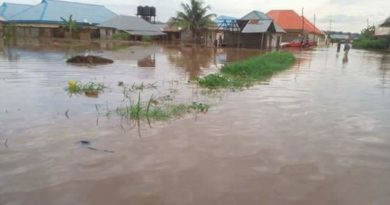WMO: 50-60% chance of El Niño within next 3 months
The World Meteorological organization (WMO) on Tuesday February 26,2019 said there is a 50-60% chance of El Niño developing by May 2019, although it is not expected to be a strong event, according to the latest update from the organisation. Sea surface temperatures in the tropical Pacific were at or slightly below El Niño thresholds in January and early February 2019. Some El Niño-like atmospheric patterns also emerged around late January.
Model predictions and expert opinion indicate a 50–60% chance that the ocean and atmosphere will couple, and a weak El Niño event will become established during the March–May 2019 season. A strong event (sea surface temperatures in the east-central tropical Pacific rising to at least 1.5 degrees Celsius above average) is unlikely. Through the first three quarters of 2019, the development of La Niña is highly unlikely and can be practically ruled out.
“WMO recently confirmed 2015, 2016, 2017 and 2018 as the four warmest years on record. But even a weak El Niño is likely to make 2019 warmer than 2018,” said Maxx Dilley, Director of WMO’s Climate Prediction and Adaptation branch.
The El Niño/Southern Oscillation (ENSO) is a naturally occurring phenomenon involving fluctuations of ocean surface temperatures in the equatorial Pacific, coupled with changes in the overlying atmospheric circulation. It has a major influence on weather and climate patterns over many parts of the world.
Scientific progress on the understanding and modelling of ENSO, underpinned by major observational programmes, has improved monitoring and prediction capabilities, helping society to prepare for the associated hazards such as heavy rains, floods and drought. ENSO also affects global temperature.
WMO’s update is based on forecast models and expert interpretation from around the world. It is used by planners within the United Nations system, and complements information issued by National Meteorological and Hydrological Services and WMO Regional Climate Centres as a source of information for country-level decision-making by disaster managers, for planning in climate-sensitive sectors, and by governments.
El Niño is often associated with warm and dry conditions in southern and eastern inland areas of Australia, as well as Indonesia, the Philippines, Malaysia and central Pacific islands such as Fiji, Tonga and Papua New Guinea.




